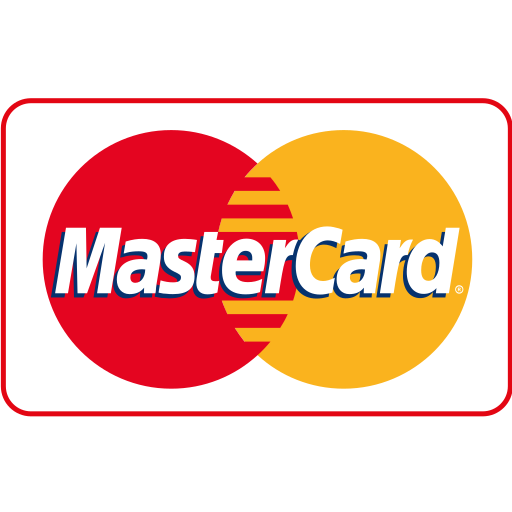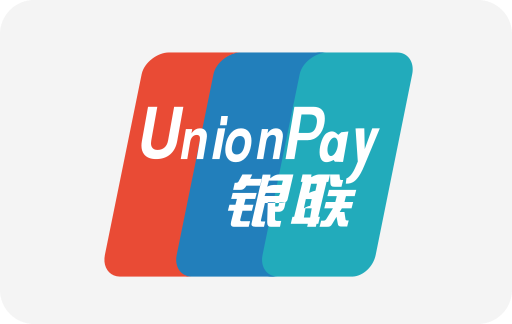
Starting a website can feel like a daunting task, especially if you are new to the world of online marketing and web development. Whether you want to launch a blog, an online store, or a professional portfolio, understanding the basics can set you on the right path. This guide is designed as an easy-to-follow introduction for adult learners in a night class setting, particularly tailored for those in Singapore who want to begin their journey in website creation.
By the end of this guide, you will learn what essential elements you need to consider, the costs involved in Singapore dollars (SGD), practical steps to get started, and how to optimize your site to reach your audience effectively.
Why Start a Website?
Before diving into technical details, it’s important to understand why you want a website. A website can serve multiple purposes:
- Business Presence: Showcase your products or services to attract customers online.
- Personal Branding: Establish your professional persona or portfolio.
- Blogging: Share your ideas, knowledge, or hobbies.
- E-commerce: Sell products or services directly from your site.
- Community Building: Create forums or social platforms for like-minded groups.
The purpose of your website will determine how you approach building it and what features you need.
Step 1: Planning Your Website
Planning is the foundation of a successful website. Here are the key considerations:
Define Your Goals
Ask yourself what you want to achieve. Some common goals include generating leads, selling products, sharing information, or building a subscriber list. For example, if you live in Singapore and run a local bakery, your goal may be to showcase your menu, take online orders, and provide contact information.
Identify Your Target Audience
Understanding who will visit your site helps tailor content and design. Will your visitors be young tech-savvy users, local customers, or international clients? For instance, Singapore’s diverse population means you might want a multilingual site or mobile-friendly design catering to busy commuters.
Research Competitors
Look at similar websites in your niche to see what works well and what doesn’t. This helps inspire your own design and content strategy while identifying gaps you can fill.
Create a Site Map
A site map is a simple outline of all the pages your website will have and how they link together. Typical pages include:
- Home
- About Us
- Products/Services
- Blog/News
- Contact
This structure helps organize content and improves navigation for visitors and search engines.
Step 2: Choosing the Right Domain Name
The domain name is your website’s address on the internet (e.g., www.yourbusiness.sg). Choosing a good domain is critical as it affects branding, SEO, and memorability.
Tips for Choosing a Domain Name
- Keep It Short and Simple: Avoid complicated spellings or long strings of words.
- Use Keywords: Incorporate words related to your business or industry to improve SEO.
- Select an Appropriate Extension: Popular options include .com, .sg (Singapore), .net, or industry-specific extensions like .store or .tech.
- Avoid Numbers and Hyphens: These can confuse users and complicate branding.
You can register domain names through services such as GoDaddy, Exabytes, or Singapore’s own SGNIC. Prices typically range from SGD 10 to SGD 50 per year depending on the extension and registrar.
Step 3: Selecting a Web Hosting Service
A web host stores your website files and makes them accessible over the internet. Choosing reliable hosting affects your site’s speed, uptime, security, and overall user experience.
Main Types of Hosting
- Shared Hosting: Multiple websites share server resources. Affordable but slower performance. Ideal for small sites and beginners.
- VPS Hosting: Virtual private server with dedicated resources. More expensive but offers better speed and control.
- Dedicated Hosting: You rent an entire server. Costly but excellent for large businesses with high traffic.
- Managed Hosting: The provider manages technical maintenance. Good for those who want hassle-free hosting.
In Singapore, popular hosting providers include Exabytes, Vodien, SiteGround, and Bluehost. Prices for shared hosting start as low as SGD 5-10/month, whereas VPS plans range from SGD 30-100/month depending on resources.
| Hosting Type | Description | Price Range (SGD/month) | Recommended For |
|---|---|---|---|
| Shared Hosting | Multiple users share server resources | 5 - 15 | Begginners, small websites |
| VPS Hosting | Dedicates virtual resources per user | 30 - 100+ | Midsize businesses, growing traffic |
| Dedicated Hosting | Sole use of entire physical server | 150 - 500+ | Large enterprises, high-traffic sites |
| Managed Hosting | Hosting with maintenance & support | 50 - 200+ | User convenience-focused sites |
Step 4: Deciding How to Build Your Website
You have several options when it comes to creating your website:
No-code Website Builders
If you want an easy way without technical skills, platforms like Wix, Squarespace, Shopify (for e-commerce), or WordPress.com offer drag-and-drop interfaces. You pay monthly fees that cover hosting and design tools.
Pros:
- User-friendly with templates and support.
- No coding required.
- Might include integrated marketing tools.
Cons:
- You have limited customization compared to coding from scratch.
- You may incur ongoing subscription costs.
Coding Your Own Website
If you have technical skills or want full control, you can build your site using HTML, CSS, JavaScript, or frameworks like React or Vue.js. This option requires more time but offers complete customization.
Pros:
- Total control over design and functionality.
- No dependency on platform restrictions.
Cons:
- Takes significant time and technical knowledge.
- You must handle hosting setup and updates yourself.
Coding with Content Management Systems (CMS)
A great middle ground is using CMS platforms like WordPress.org, Joomla, or Drupal. They allow you to manage content easily while customizing themes and plugins. WordPress powers over 40% of all websites globally due to its flexibility.
This requires hosting with providers that support CMS installations (often available as one-click installs).
Step 5: Designing Your Website
Your website’s design impacts user experience and trustworthiness. Here are tips when designing your site:
- Simplicity: Keep layouts clean and navigation intuitive.
- Makes Use of White Space: Avoid cluttering to highlight key content.
- A Mobile-first Approach: With many users on smartphones (especially in Singapore), ensure your site is responsive across devices.
- Main Call-to-Action (CTA): Direct visitors clearly towards desired actions (e.g., “Buy Now,” “Contact Us”).
You can use free or premium themes/templates from marketplaces or create custom designs if coding yourself or hiring a designer.
Step 6: Creating Content for Your Website
The content you put on your website—text, images, videos—communicates your message to visitors. Here are important content principles:
- Crisp and Clear Messaging:Your text should be easy to read and convey benefits quickly.
- Avoid Jargon:If targeting local Singapore customers, use familiar language that appeals to them.
- Add Visuals:Add high-quality images or videos relevant to your business to engage visitors.
- Add Testimonials or Reviews:This builds credibility and trust among potential customers.
Step 7: Optimising Your Website for Search (SEO Basics)
Your website is useless if people can't find it online. Search Engine Optimization (SEO) helps improve your site's visibility on Google and other engines.
The Fundamentals of SEO You Should Know
- Keyword Research:Select words your target audience uses when searching for products/services (tools like Google Keyword Planner can help).
- Create Valuable Content:Your pages should provide useful information answering visitor questions.
- META Tags Optimization:The title tag and meta description help search engines understand your page subject and influence click-through rates.
- Sitemap Submission:Create and submit an XML sitemap via Google Search Console to help indexing.
- Navigational Structure:A clear hierarchy benefits both users and search engines crawling your site effectively.
Step 8: Launching and Maintaining Your Website
The launch is when you make your website live for the public. Before that, test thoroughly:
- If all links work correctly.
- The site loads fast across devices.
- No spelling or grammatical errors exist.
You should also implement analytics tools such as Google Analytics to monitor visitor behaviour and continuously improve the site performance based on data insights.
The Importance of Maintenance
A website is not a one-time project. Regular maintenance involves:
- The updating of software (CMS/plugins/themes) to prevent security risks.
- Addition of new content or blog posts to keep the site fresh and relevant.
- The fixing of broken links or outdated information.
A Real-life Example: Starting “Kopi Kulture” – A Singapore Local Café Website
I once helped a client launch a website for “Kopi Kulture,” a local café in Singapore aiming to attract more foot traffic and online orders during COVID-19 lockdowns. Here are key lessons from this case:
- The client’s goal was clear: to showcase their unique coffee blends and offer takeaway ordering options online.
- The domain chosen was www.kopikulture.sg – short, relevant, with the .sg extension to emphasize its local connection.
- I recommended shared hosting from a Singapore provider with data centres nearby to ensure faster load times for local users—pricing was about SGD 8/month.
- A WordPress CMS was chosen for easy content management; the site used a modern café-themed template optimized for mobile devices since most users accessed via phones during commutes.
- The content focused on storytelling about Singapore’s coffee culture combined with menus and clear call-to-actions like “Order Now.”
- Please note SEO optimisation: keywords included “best kopi Singapore” and “takeaway kopi near me,” helping rank well on Google search results locally within weeks after launch.
This partnership exceeded expectations because the client engaged actively with regular blog posts about new blends and events while tracking visitor analytics. Their online presence grew steadily resulting in increased sales even beyond physical store hours.
A Quick Cost Summary (in SGD) for Setting Up a Basic Website in Singapore
| Expense Item | Description | Lump Sum / Monthly Cost Range |
|---|---|---|
| Domain Registration | .com / .sg domain yearly fee | $10 - $50 / year |
| Web Hosting | Shared Hosting plan suitable for beginners | $5 - $15 / month |
| No-Code Website Builder Subscription (optional) | If using Wix, Squarespace etc. | $15 - $40 / month |
| Coding / Design Costs (optional) | If hiring freelancers or agencies | $500 - $5,000 (one-time) |
| Email Hosting | Email linked to domain (e.g., [yourname]@yourdomain.sg) | $5 – $15 / month |
The Final Word: Start Small, Learn Continuously!
The digital world is constantly changing; starting small gives you the flexibility to learn as you grow. Don’t be afraid to experiment with different tools, seek online tutorials, join Singapore-based digital communities, or even take night classes like this one to enhance your skills.
A well-planned website is an investment that can open doors to new business opportunities, improved branding, and deeper connections with customers locally and globally. Embrace the learning journey step by step—you’ll be amazed how much you can achieve!
If you have any questions or want tailored advice on starting your own website in Singapore, feel free to reach out during our next class session!
Disclaimer: Prices mentioned are as of mid-2024 and may vary with promotions or changing market conditions in Singapore.
We are the best marketing agency in Singapore.
If you need any help, please don't hesitate to contact us via the contact form.















WebSeoSG offers the highest quality website traffic services in Singapore. We provide a variety of traffic services for our clients, including website traffic, desktop traffic, mobile traffic, Google traffic, search traffic, eCommerce traffic, YouTube traffic, and TikTok traffic. Our website boasts a 100% customer satisfaction rate, so you can confidently purchase large amounts of SEO traffic online. For just 40 SGD per month, you can immediately increase website traffic, improve SEO performance, and boost sales!
Having trouble choosing a traffic package? Contact us, and our staff will assist you.
Free consultation